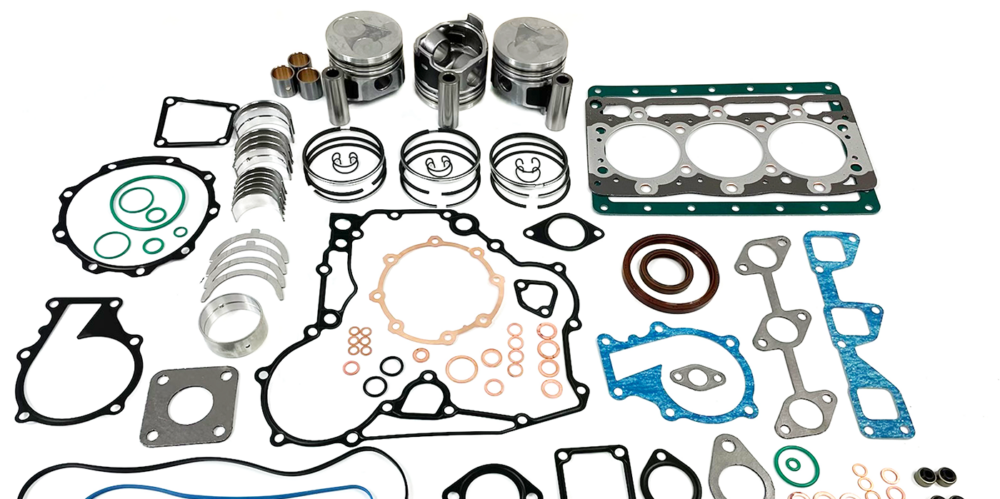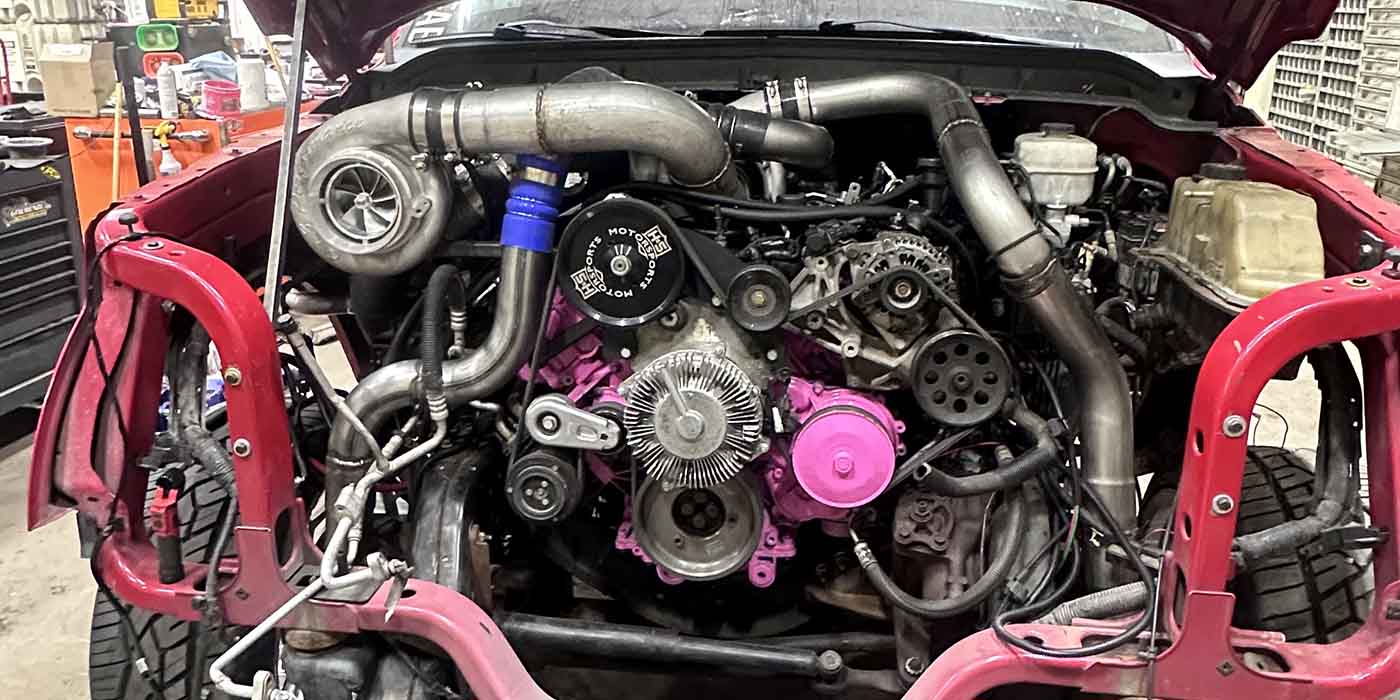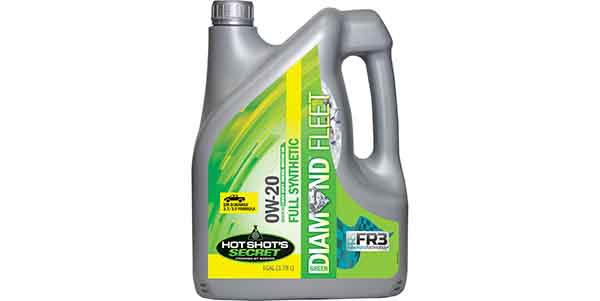The heavy-duty diesel engine industry is highly specialized, with manufacturers, service providers, engine shops, and repair facilities all playing important roles in ensuring that these machines perform at their best. Manufacturers design and build engines that meet the specific needs of various industries and applications, while service providers offer a range of maintenance and repair services to keep engines running smoothly.
The market for heavy-duty diesel engines and equipment is diverse and includes a wide range of applications. According to a report by Grand View Research, the global heavy-duty diesel engine market size was valued at $14.7 billion in 2020 and is expected to grow at a compound annual growth rate of 4.8% from 2021 to 2028. The report also notes that the transportation sector is expected to account for the largest share of the market due to increasing demand for heavy-duty trucks and buses.
The construction industry is also a significant market for heavy-duty diesel equipment, with excavators, bulldozers, and cranes being among the most common pieces of equipment. Even more popular now are smaller sized machines like skid steers, back hoes and mini excavators. Companies like Maxiforce market directly to this segment.
“A lot of heavy equipment has a niche,” says Paul Kelly, president of Maxiforce. “More and more we’re seeing smaller equipment fill that gap of being an all-around tool. A big 907 Caterpillar excavator or D11 dozer is going to be used for construction. But, then you have these smaller skid steers and mini excavators that can be applied to anything from construction to industrial to landscaping to agriculture – almost every racetrack has a skid steer. Whether that be to move equipment, clean up brush, etc. They’re like Swiss army knives.”
It’s also important to note that heavy-duty diesel equipment and the engines that power them, for most people, are a need and not a want, unlike most of the other engines featured in Engine Builder. Construction businesses, farms, private contractors, etc., rely on this equipment for their livelihood, meaning that even in a recession, this industry is likely to remain stable.
What sets the heavy-duty diesel industry apart from the more general automotive/equipment market is the warranty and OEM support after a sale.
“The OEM is going to have a parts warranty that will carry the machine for a number of years,” says Chris Harper of Maxiforce. “For the majority of machinery, OEMs will have a 5–10-year warranty to where if something tears up, you can get it fixed. In the diesel engine market, especially when you’re doing commercial diesel stuff, the OE will only stand behind that engine for so long. It used to be around a guaranteed five years, now it’s closer to two years, sometimes it’s only one.”
The situation then arises where diesel equipment owners have an engine problem and aren’t quite sure how to solve it without spending thousands of dollars. That where replacement parts come in.
Replacement Parts
Relying on OE manufacturers like Caterpillar, Cummins, Detroit Diesel and Waukesha has always been an option, but diesel equipment owners are now more than ever seeking the aftermarket as a more viable solution for replacement parts.
Most of the larger equipment OEs have their engines built by other companies, usually Japanese ones like Kubota, Shibaura and Yanmar, making it hard for owners to find easy access to replacement parts or new engines without paying an arm and a leg and dealing with extended delivery times.
That’s where companies like Maxiforce come in. According to the company’s website, Maxiforce can ‘generate savings of 30%-40% compared to original equipment manufacturers.’
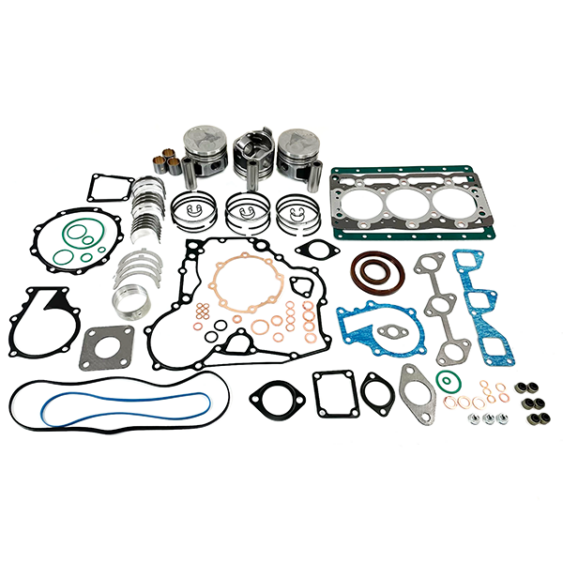
“We used to believe that the focus was on seven or eight engine brands, and now we’ve taken that focus to 60 or 70 different OEs,” Kelly says. “John Deere is probably what we’re known for the most, but what we’ve really became popular for over the last decade is small-bore diesels. Most of these big OEs are having these engines built by Japanese companies like Kubota, Shibaura, Yanmar, etc., and it’s hard for customers to find the right parts for these because it gets confusing. They don’t know that they’re dealing with a Japanese engine and when they open the hood, they don’t recognize it.”
Maxiforce produces a wide range of rebuild kits and replacement parts, including many items not offered by either the machine or engine OE manufacturers. For instance, if you have a Bobcat 753 skid steer powered by a Kubota V2203 engine, it will be difficult to find an overhaul kit from either Bobcat or Kubota. Fortunately, Maxiforce has created its own kit, which includes a piston and ring set, main bearings, front crankshaft bushing, top and bottom gasket sets, and other essential components to get the engine back in working order, and at a considerable savings to the customer, but still an upside for the shop doing the work.
A comprehensive online catalog makes it easy for customers to find the exact overhaul kit for their particular engine and equipment combination. Maxiforce offers products for John Deere, Perkins, Caterpillar, Yanmar, Cummins, Kubota, Mitsubishi, Shibaura, and IH/Navistar applications. Aside from their overhaul kits, they’ve also begun offering standalone parts and bolt-ons.
“We’ve really expanded our line of turbos, cylinder heads, fuel lines, sensors, etc. for the smaller equipment,” Kelly says. “The turbos and injectors without core are very unique to Maxiforce, and we’ve probably tripled that range over the last year. It’s a huge opportunity for the engine builder because they can swap it out, keep their core for later, and they can make money rebuilding that injector and keep it and just buy a new one from us, install it and go.”
Maxiforce also has a co-branding agreement with IPD, another heavy-duty diesel company. IPD Xtra expands IPD’s product offering into small-bore engines via Maxiforce’s already established lines, providing the broadest Caterpillar coverage in the construction and power generation markets. Customers can get the aftermarket engine parts they need for smaller Cat construction equipment like skid steers, mini excavators, loaders and generators, as well as customers’ larger equipment needs, all in one place.
Replacement parts are an essential component of maintaining heavy-duty diesel engines and equipment. When a part fails, it can cause significant downtime and potentially lead to more extensive repairs. To keep equipment running smoothly, it is crucial to use high-quality replacement parts before it’s too late and an entire engine replacement is needed. But, even before considering that option, it’s imperative that equipment owners practice proper maintenance on their machines.
Maintenance & Care
Regular maintenance is critical for ensuring the longevity and reliability of heavy-duty diesel engines and equipment. It helps prevent small issues from becoming larger problems that could lead to costly downtime or even engine failure. Some of the most important maintenance tasks include oil changes, filter replacements and inspections.
Regular inspections are essential for detecting potential issues before they become major problems. Shops can check for leaks, worn parts, and other issues that could affect engine performance. Inspections can also help identify areas where preventative maintenance may be needed.
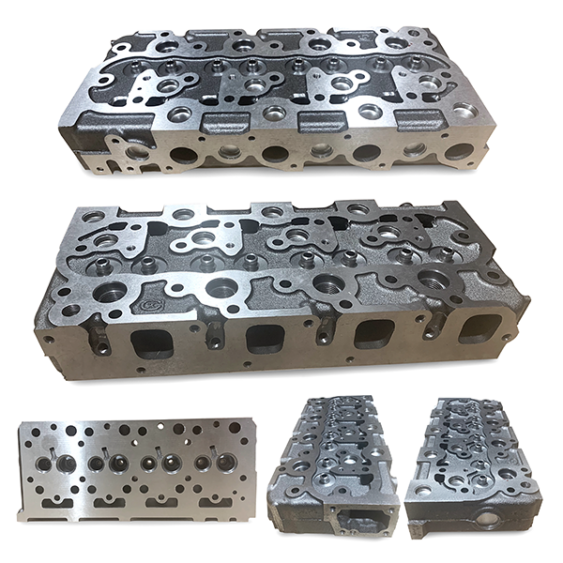
Unfortunately, it’s hard to fully protect and maintain a machine’s engine simply due to the fact the diesel equipment is often used for a multitude of purposes and applications. The engine in a skid steer or other small equipment was designed for a specific task yet can be used in so many others. Also, any of these machines are rented out to contractors, and like anything that is rented or loaned, the equipment is often not cared for as much as it would be if it was owned outright.
“Temperature, time of year, the altitude, these are all things that are going to affect the timeline of your engine’s health, how it performs, and when it breaks down,” Harper says. “It also just depends on how that particular operator is using it. Take the oil pump and lubrication inside the engine – if the engine is perfectly level, everything’s fine. But, once you start moving on an incline, which these vehicles often do, the oil is going to move to one side and the pump might not be able to grab it. Now your engine is starving for oil and it’s going to get hot, and something might break.”
It’s important that owners and renters of heavy-duty diesel equipment are knowledgeable of the best practices for operating their machines if they want to keep them in good working order and avoid expensive repairs or rebuilds. However, if and when those problems arise, shops need to know they don’t have to turn away this work out of fear they can’t find the parts, because sources such as Maxiforce have you covered. It’s another revenue stream on top of your existing ones, and a customer base that will thank you for keeping them going. EB

